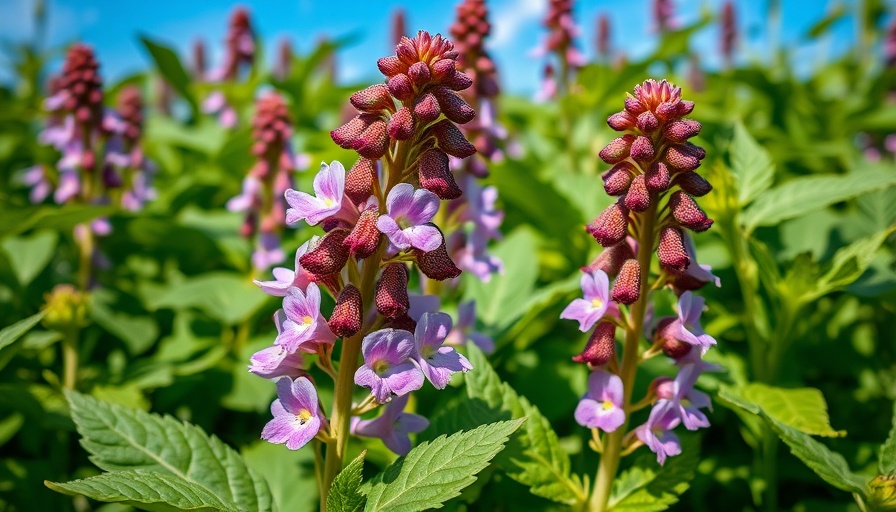
Why Comfrey Is an Unsung Hero in Your Garden
While often dismissed as a garden bully, comfrey (Symphytum officinale) deserves a second look. With its fast growth and remarkable healing properties, comfrey can be an asset in your backyard. Here, we explore its many benefits, making a compelling case for its inclusion in your garden design.
A Natural Compost Powerhouse
Comfrey’s deep taproot, extending up to 10 feet, draws essential nutrients from deep within the soil, making it a biological powerhouse. By planting comfrey in your garden, you’re not just introducing a beautiful flowering perennial; you’re enhancing your soil’s fertility. Comfrey leaves are rich in nitrogen and can be chopped and added directly to your compost pile or used as a fertilizer, allowing for nutrient-rich mulch that will nourish your plants.
The Medicinal Marvel
Did you know that comfrey has been used for centuries in herbal medicine? The plant contains allantoin, a compound known for its cell-repairing properties, making it effective for treating skin injuries, strains, and sprains. By creating a comfrey-infused oil or salve, you can harness this herb's healing effects at home, providing a natural remedy for minor ailments and promoting faster recovery.
Comfrey: Friend or Foe?
Many gardeners debate whether comfrey is a friend or foe due to its invasive nature. While it can spread rapidly, with the right management, it can be cultivated in contained areas, offering substantial benefits without overwhelming your garden. Effective solutions include growing comfrey in confined spaces or enclosures where its growth can be controlled, thus reaping its benefits without compromising other plants in your outdoor space.
Deliciously Unique: Comfrey in Culinary Uses
Though not commonly known, comfrey can also be utilized in culinary applications. Its leaves can be added to smoothies or soups, providing an unusual but nutritious addition to your meals. Just be cautious with consumption, as it’s advisable to limit intake due to potential liver toxicity over extended periods. Always consult with a healthcare professional before incorporating any new herb into your diet.
Designing Your Garden with Comfrey
Comfrey’s lush green foliage and lovely bell-shaped flowers can enhance your garden’s aesthetics as well. Using it as a backdrop for a flower bed or including it in a mixed border creates visual interest while simultaneously improving the soil health. Its striking presence attracts beneficial pollinators like bees and butterflies, enhancing the overall ecology of your garden.
Practical Tips for Growing Comfrey
Starting your comfrey journey is simple. It thrives in well-drained soil and prefers full sun, though it can tolerate partial shade. Planting comfrey in a designated area ensures its prolific nature doesn't disrupt your planned landscaping ideas. Consider creating a dedicated herb patch or using raised beds to control its spread.
Community Wisdom: Joining the Comfrey Conversation
Connecting with fellow gardening enthusiasts who have experience with comfrey can be one of the best ways to learn about its nuances. Online forums, local gardening clubs, and community gardening events offer vibrant platforms where these discussions can flourish. Engaging with your community can lead to sharing resources, knowledge, and perhaps even comfrey plants themselves!
In conclusion, growing comfrey in your garden can be a game changer—not just for the soil but for its healing properties and culinary potential as well. As you embrace this herb's benefits, consider how it aligns with your gardening practices and community values.
Join the conversation today! Share your comfrey experiences or tips with us!
 Add Row
Add Row  Add
Add 




Write A Comment